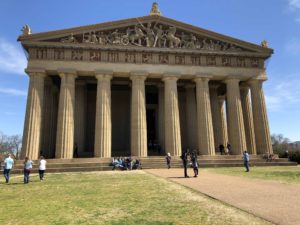Though I am officially no longer a physics major, my life has remained entangled (perhaps quantumly so) with the sciences. It sometimes seems to me as if the sciences refuse to relinquish their hold on me, as this semester I was approached by members of the biology department and asked to serve as a supplemental instructor for General Biology II.
Though I was extremely nervous to start the position, as I am not a biology major, I have grown to love the job, due to the way I am able to make a positive impact on the academic experiences of my peers. Recently, the class has started to learn about muscles and their form and function. During the most recent session, I asked a question regarding typical muscle fiber patterns, which are either pennate or parallel in their arrangement.
Pennate muscle structure is differentiated from parallel in that the muscle fibers are arranged at an angle to the force-generating axis within the muscle, whereas parallel muscle structure involves muscle fibers that exist in parallel with the force-generating axis. As a result of this differentiated architecture, muscles that feature a pennate arrangement are able to produce more force than those that are arranged in parallel; however, muscles that display a pennate structure are quite limited in their movement.
Continue reading “Once Again Addressing Force”


